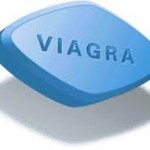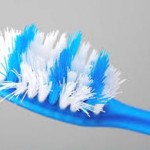Archive for Uncategorized
Many Uses of Viagra
Posted by: | Comments Originally Viagra was developed to treat patients with angina, by helping open constricted blood vessels. But unlike many drugs, the side effects of Viagra can be more than or just as beneficial as the drugs original purpose. One of the side effects leading to its current fame is as an erectile dysfunction medication for men. Soon other side effect benefits of this drug have been discovered.
Originally Viagra was developed to treat patients with angina, by helping open constricted blood vessels. But unlike many drugs, the side effects of Viagra can be more than or just as beneficial as the drugs original purpose. One of the side effects leading to its current fame is as an erectile dysfunction medication for men. Soon other side effect benefits of this drug have been discovered.
Viagra for Kids:
Pulmonary Hypertension is a serious disorder of high pressure in the blood vessels leading to the lungs. Doctors have begun administrating Viagra to infants and babies to treat this life-threatening lung disease.
Amputations:
It has been used as an off-label to increase the blood flow to damaged areas as a way to avoid amputation and the onset of gangrene.
Mountain sickness:
Viagra can reduce pulmonary artery pressure at high altitude and improve the ability to exercise in low oxygen conditions.
Female Menstrual Cramps:
Sildenafil, the active ingredient in Viagra has helped women who suffer from moderate to severe menstrual cramps.
Raynaud’s phenomenon:
People with this ailment find exposure to the cold, triggers spasm of the small arteries that supply blood to the fingers, toes. Which will eventually become pale, cold, and painful. Viagra has shown to be helpful in clinical trials.
Heart disease:
Studies suggest Viagra might help patients with congestive heart failure or diastolic dysfunction.
Prostate Cancer:
New research may also lead to another use of Viagra: as a treatment for prostate cancer in combination with another cancer drug.
One small blue pill with many cures and possible uses. What will this little gem of a drug come up with next?
Toothbrush and Illness
Posted by: | Comments Researchers have estimated that up to 1.2 million bacteria live on a single toothbrush. It’s a fact that there are more bacteria in the mouth than anywhere else in your body, and some of them get on your toothbrush. These germs can include the flu virus, staph bacteria, yeast fungus, E. coli and the strep virus.
Researchers have estimated that up to 1.2 million bacteria live on a single toothbrush. It’s a fact that there are more bacteria in the mouth than anywhere else in your body, and some of them get on your toothbrush. These germs can include the flu virus, staph bacteria, yeast fungus, E. coli and the strep virus.
Bathrooms are the perfect place for bacteria to grow — they are moist and steamy. In addition, it’s not helpful that most toothbrushes sit next to the toilet. Just like you wouldn’t store your dining plates and glasses next to your toilet, you shouldn’t do the same with your toothbrush. Every time you flush, an invisible plume of vapor is released from your toilet and can hang in the air for several minutes. These contaminated water vapors easily travel and can end up on surfaces that are close by, such as your toothbrush.
So is it possible to become sick by using a germy toothbrush? Yes, however with the help of our immune system and everyday good hygiene habits, it is unlikely that your toothbrush will make you sick. But, many things can affect our immune system, like stress, lack of sleep and poor eating habits. So there’s a chance for these bacteria can break through and impair your health.
To stay in good health, put these helpful tips into practice:
- Wash your hands before and after brushing.
- Change your toothbrush every three months or whenever you have the flu or a cold. You should also change when the bristles become worn.
- Alternate between two brushes to make sure you use a completely dry brush.
- Store your brush away from the toilet, and close the lid before flushing.
- Do not share brushes and avoid storing toothbrushes together.
- Rinse your toothbrush thoroughly after every brush with hot water. For a more effective rinse, submerge your brush in hydrogen peroxide or alcohol-based
mouthwash. - Let your brush air-dry before putting a cap on the head or storing it away.
- Use a different tube of toothpaste if you or someone else in your family is sick.
Cold or Flu Season- 10 Things You Should Know
Posted by: | CommentsThe cold and flu season is upon us. To help understand the difference and reduce the possibility of acquiring either, read the follow 10 suggestions.
- Cold germs can survive on bathroom sinks, kitchen counters and doorknobs for up to 3 hours. Sanitize these areas regularly.
- Colds are most contagious before symptoms start to appear.
- There are over 200 viruses that can cause a cold.
- Since colds are due to a virus, the use of antibiotic will not work. Antibiotics are used to treat bacterial infections like the flu.
- Stress is the number one cause to increased susceptibility to a cold or flu infection.
- Chicken soup does help fight colds. It breaks up nasal congestion and the lean protein (chicken) helps boost your strength to fight off the illness.
- Though you can run a mild fever with a cold in most cases a fever, especially a high fever will indicate it’s a flu not a cold.
- The flu is bacterial and must be treated with antibiotics. If left untreated, it could lead to pneumonia, a life threatening respiratory illness.
- Flu shots do not carry an active flu viruses in them. You can’t get the flu from taking a flu shot.
- Protect yourself from a cold or flu by washing your hands regularly, several times a day, with soap and water. Hand sanitizers can also help when soap and water are not available.
Can You Learn By Dreaming?
Posted by: | Comments A recent article in the Harvard Gazette suggests we do. In a sleep study, people were awaken repeatedly during their dream cycles. What researchers found was that these people had a hard time retaining what they had learned the previous day. Whereas, those who had uninterrupted sleep, produced significant differences in remembering the previous day’s activities and information. Dreams are a way for the brain to categorize thoughts, activities and acquired knowledge from the previous day. That sleeping and the process of dreaming are what helps us learn and retain knowledge.
A recent article in the Harvard Gazette suggests we do. In a sleep study, people were awaken repeatedly during their dream cycles. What researchers found was that these people had a hard time retaining what they had learned the previous day. Whereas, those who had uninterrupted sleep, produced significant differences in remembering the previous day’s activities and information. Dreams are a way for the brain to categorize thoughts, activities and acquired knowledge from the previous day. That sleeping and the process of dreaming are what helps us learn and retain knowledge.
Dreams are the brains way of synchronizing thoughts, repeating the process over and over to help build and strengthen neural pathways. In essence the more we dream the better we are able to retain information that we learn. For athletes, the suggestion from their coaches of getting a good night’s rest maybe be more important than previously thought. Our dreams of running, throwing and catching are another way of practicing. Just like when practicing physically, dreams help us improve and strengthen the new connections we create in our brains when we learn new information.
Nightmares may even help you learn. It has been theorized that some nightmares maybe Mother Nature’s way of practicing for dangerous events. Back in our history, cavemen where constantly aware of possible dangers and many times had to react to dangerous situations. Our life styles now do not present the same dangers, our brains thinks differently in the subconscious. It must be prepared and remain ready. In an attempt to preserve itself, the brain runs scenarios of dangerous situations teaching us to either run or fight, the fight or flight response. How we behave in our dreams is how we most likely will behave in an extreme situation. Our brain runs these games to re-enforce our neural pathways to danger in an effort to protect itself or us.
Not all dreams and nightmares may not fall within these categorizations, but many scientist believe good sleep with dreams help the body to stay in good physical and mental health.
Is Your Doctor Telling You the Truth?
Posted by: | Comments A recent survey suggests that many times they are not. From a collection of data from 2009 by the Charter of Medical Professionals, found that openness and honesty in communications between doctor and patient wasn’t always present.
A recent survey suggests that many times they are not. From a collection of data from 2009 by the Charter of Medical Professionals, found that openness and honesty in communications between doctor and patient wasn’t always present.
Of the 1,891 physicians that participated in the survey, 10% admitted to lying to a patient within the past year. Another 40% felt it was unnecessary to disclose a financial relationship they had with a drug company before prescribing medications.
On the bright side, the vast majority of surveyed physicians agreed that patients should be fully advised about the risk and benefits of interventions, and they should never disclose a patients confidential information to an unauthorized person.
The most startling part of the survey is that nearly 1/3 of the participating physician admitted to not telling patients of a mistake they may have made in their care, for fear of being sued. It’s important that patients have a form of recourse in cases where a physician is clearly negligent, but doctors are human and mistakes will happen, we must find a way to allow a physician to feel confident in making full disclosures to a patient especially when it come to their health, without the constant fear of litigation.
Be Safe This Halloween
Posted by: | Comments Ghost, goblins and vampires…Halloween will soon be here. For kids, Halloween is an exciting holiday and nothing ends a great time more quickly than a trip to the emergency room. To ensure a happy venture, here are some “tricks” for a safe Halloween.
Ghost, goblins and vampires…Halloween will soon be here. For kids, Halloween is an exciting holiday and nothing ends a great time more quickly than a trip to the emergency room. To ensure a happy venture, here are some “tricks” for a safe Halloween.
Motorists
Watch for children darting out between cars.
Watch for children walking medians and curbs.
At twilight and later into the evening, watch for children in dark costumes.
Parents
Designate an adult or older child to supervise younger children during the outing.
Plan and discuss the route the trick-or-treaters, plan to follow.
Instruct children to travel only in familiar areas.
Teach children to stop only at houses that are well-lit and to never enter a stranger’s home.
Remind children of safety rules about crossing the street.
Always have them walk and not run.
Tell them to only eat candy that you have inspected first.
Costume Design
Use only fire-retardant materials for costumes.
Costumes should be loose, so that warmer clothes could be worn underneath.
Costumes should not be so long that they become a tripping hazard (falls from running, tripping over lawn decorations or costumes are the leading cause of Halloween injuries).
Costumes should be of light colored or use strips of reflective tape to make children visible at night.
Masks or makeup
Masks can obstruct a child’s vision. Facial makeup is a better alternative.
Make sure the Halloween makeup is labeled with “Made with U.S. Approved Color Additives, “Laboratory Tested”, Meets Federal Standards for Cosmetics, or “Non-Toxic”. Follow manufacturer’s instruction for application.
Accessories
Knives and swords should be made of flexible materials. Do not allow children to carry sharp objects.
Carrying flashlights will help children see better and be seen more clearly.
Remind children before going out the following rules:
Do not enter any homes or apartments without you being with them.
Walk, don’t run between houses. (Tripping over unforeseen objects and uneven terrain can end their evening early)
Walk on the sidewalks and not in the street.
Always look both ways before crossing streets.
Cross all streets at the corners.
Miscellaneous:
Give children a meal before the outing.
Use the restroom just before leaving the house.
Inspect all candy before allowing children to eat them.
When in doubt, throw it out.
Following these simple safety rules and everyone will have a “fang…tastic” time.
Are You Prepared for the Next Earthquake?
Posted by: | Comments The dramatic scenes of the devastation after any large earthquake, should remind us to take preventive actions to make sure that when an earthquake of substantial size strikes us, that we are prepared.
The dramatic scenes of the devastation after any large earthquake, should remind us to take preventive actions to make sure that when an earthquake of substantial size strikes us, that we are prepared.
California sits on the Pacific Ring of Fire. The Ring of Fire contains 452 volcano’s and is one of the most seismic active areas in all the world. Approximately 90% of all the world’s earthquakes and 80% of the most powerful earthquakes, happen along this Ring.
Researchers warn that California is due for another powerful earthquake. It would be in our best interest to be prepared. Here are some suggestions for preparing your home and which supplies you should have at hand.
Hazards in the Home
• Place heavy objects on lower shelves.
• Locate beds away from windows and chimneys.
• Use straps or strapping to secure your water heater from falling.
• Store valuable documents and special small keepsakes in a fire-resistant place.
• Store weed killers, pesticides and flammable products securely in closed cabinets with locked latches.
• Secure shelves, mirrors, pictures and large cabinets to the wall. Most injuries happen from falling items.
Education
• Teach all family members how to turn off the water, gas and electricity.
• Turn off gas if you smell gas or hear a hissing noise.
• Take a CPR and First Aid training course .
• During an earthquake duck, cover and hold on. Most injuries from earthquakes come from items falling on to you. You need to protect your head and body by finding a safe haven under a table or doorway and hold-on until the earthquake ends.
Disaster Supplies
Here is a list of items we suggest you have available. Plan on being on your own for at least 3 days. Emergency services will be overloaded and general services may take several days before they are reinstated.
• Flashlight with extra batteries.
• Battery powered radio.
• First Aid Kit and Manual.
• Food and Water (Plan on at least 3 days of food and water. For water, plan on 12 liters per person per day. Get food that is easy to prepare, does not need heating of cooling and is easy to preserve or consume).
• Water purification tablets.
• Non electrical can opener.
• Essential medicines.
• Cash or credit cards.
• Sturdy shoes.
• Small fire extinguisher.
• Water proof matches.
• Wrench (turn off gas).
• Toiletry items (soap, toothpaste, bath tissue).
• Plastic tarp or tent, in case staying inside is not an option.
• Sleeping Bags or blankets.
Extra items to Consider
• If water is still running fill bathtub and extra containers.
• If you turn off your gas a professional must restart it. DO NOT restart it yourself.
• Designate an out of State contact. Telephone lines within the State maybe overloaded. You may find better success calling a relative out-of-state.
Leave messages here for other family members.• Confine pets. Being scared they may act aggressive or they may hide making it hard to locate them.
Here is a start for you to begin getting prepared. For more information visit the FEMA, CDC or local government websites.
Cell Phones and Cancer
Posted by: | Comments San Francisco recently introduced legislation that will require cellphone retailers to label their devices with the level of radiation they emit. This has been a continuing discussion in the medical community upon the safeness of cell phones. A recent study cast new doubts on any links between cellphones and the two most common types of brain disease.
San Francisco recently introduced legislation that will require cellphone retailers to label their devices with the level of radiation they emit. This has been a continuing discussion in the medical community upon the safeness of cell phones. A recent study cast new doubts on any links between cellphones and the two most common types of brain disease.
This study looked at the number of incidence of glioma and meningioma from 1973 to 2003. They compared it to a study conducted from 1998 to 2003. Their conclusions showed no changes or trends of increasing incidences.
These researchers warned that this study was not conclusive and suggested more research needs to happen. It was strongly suggested that children should be restricted in the use of cellphones. The American Cancer Society states that the radio frequency emitted by cellphones are not strong enough to alter or damage DNA.
With all this conflicting information, as a consumer, what can you do:
1) The FCC limits the amount of radiation all cell phones must meet, but there are wide variations between types of cell phones. The Environmental Working Group has a website http://www.ewg.org/cellphoneradiation/Get-a-Safer-Phone?allavailable=1 that ranks the phone by the amount of radiation they release. Use this as a guide when deciding on a new phone.
2) Use a wired or wireless headset. Though cordless Bluetooth devices operate at a much lower transmission they still emit some radiation.
3) Use your speakerphone function as much as possible.
4) Don’t use cell phones for extended calls. Obviously the longer the exposure the bigger the risk. Use landlines or wired headsets for those longer conversations.
Does Order of Birth Matter?
Posted by: | Comments Many psychologists say that birth order affects several aspects of a child’s personality. Here is a quick rundown of some of the differences.
Many psychologists say that birth order affects several aspects of a child’s personality. Here is a quick rundown of some of the differences.
First Born
Firstborns tend to be reliable, conscientious and perfectionists. Over half of U.S presidents were firstborns. Although, they are typically aggressive, many are also compliant people pleasers. Most are model children who have a strong need for approval from anyone in charge.
Only Children
Only children are firstborns to the third degree. They tend to be even more responsible and even bigger perfectionists. Usually they get along better with people older than themselves.
Middle Child
Middle children are the most difficult describe. They often feel like their older brother gets all the glory while their younger sister escapes all discipline. The middle child tends to be more secretive and does not openly share thoughts or feelings. They may not feel they have a special place in the family so friends and peer groups become much more important. They can usually read people well, are peacemakers who see all sides of a situation and can be independent and inventive.
Last Born
Babies of the family are social and outgoing, they are the most financially irresponsible of all birth orders. They just want to have a good time. While lastborns may be charming, they also have the potential to be manipulative, spoiled or babied to the point of helplessness.
Any Exceptions?
There can be several variables can affect the above descriptions. The years between the first and second child, or if the firstborn is a girl and the second a boy, the son will have some first-born characteristics because he is the family’s first male offspring. Also a sibling deaths, adoptions and blended families can also upset the traditional birth order.
In the end all children can be different and have to be parented in different ways.
 SANTA CLARA, CA – September 10, 2013 – CPRescue is pleased to announce its continuing training vendor relationship with ARAMARK at the Santa Clara Convention Center. On Tuesday, September 10th, CPRescue provided a Bloodborne Pathogen(BBP) training session for 85 ARAMARK employees. CPRescue has been providing Bloodborne Pathogen training for ARAMARK staff the past three (3) years. OSHA’s Bloodborne Pathogens Standard 29 CFR 1910.1030 requires that training to be completed yearly.
SANTA CLARA, CA – September 10, 2013 – CPRescue is pleased to announce its continuing training vendor relationship with ARAMARK at the Santa Clara Convention Center. On Tuesday, September 10th, CPRescue provided a Bloodborne Pathogen(BBP) training session for 85 ARAMARK employees. CPRescue has been providing Bloodborne Pathogen training for ARAMARK staff the past three (3) years. OSHA’s Bloodborne Pathogens Standard 29 CFR 1910.1030 requires that training to be completed yearly.
Bloodborne Pathogens are pathogenic microorganisms that are present in human blood and can cause disease in humans. These pathogens include, but not limited to Hepatitis A, Hepatitis B, Hepatitis C, HIV, West Niles Virus, Syphilis and Malaria. Coming into contact with these pathogens (like blood from a cut or open wound), creates the opportunity for transmission. CPRescue’s Bloodborne Pathogen training program teaches employees how to protect themselves when they have a reasonable chance of being exposed to bloodborne pathogens while performing their job duties.
ARAMARK is a leader in professional services, providing award-winning food services, facilities management, and uniform and career apparel to health care institutions, universities and school districts, stadiums and arenas, and businesses around the world.
In 2012, FORTUNE magazine again recognized ARAMARK on its list of “World’s Most Admired Companies.” ARAMARK has consistently ranked since 1998 as one of the top three most admired companies in its industry as evaluated by peers and analysts.
CPRescue looks to continue and expand its relationship with ARAMARK by offering and providing health and safety training services.
Established in 1997 in San Jose, CPRescue quickly became a leader as a CPR, first aid, AED and Bloodborne Pathogen training vendor for Corporations, Healthcare Providers (AHA BLS CPR), Hospitality Industry and for licensed Childcare Providers (EMSA approved). CPRescue has now expanded its service area to include the entire state of California. CPRescue provides onsite training classes, and is a Certified Small Business (Lic# 0030191). For additional information, please visit their website at www.cprescue.com, email at info@cprescue.com or call them at 1-888-313-2444.








